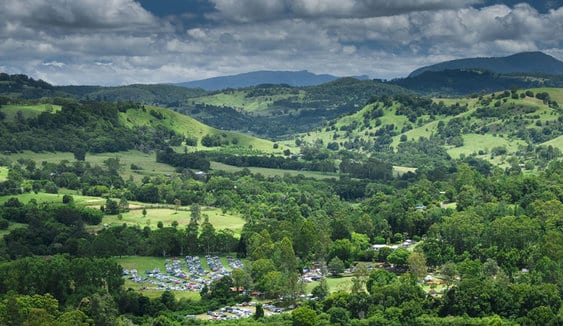Finally, some good news for solar households. After years of being wound back to the price of coal, solar feed in tariffs are moving up again – at least in some areas – driven by competition by newly established retailers challenging the incumbent big three.
Byron Bay-based Enova Energy is to lift its solar feed in tariff to 12c/kWh from January 1, up from 10c/kWh – agreeing to pay more than double the “recommended” tariff in a state that does not mandate a minimum.
The tariff will be available to customers on the Essential Energy network (which is most of New South Wales) and will be welcome news to the 146,000 households about to lose their premium feed in tariffs.
The newly launched Enova – which builds its business model around a community owned, community first, renewable energy focused strategy, is clearly ruffling the big boys, particularly Origin Energy, the previous dominant force in the Northern Rivers.
Origin has already imitated Enova’s previous 10c/kWh solar FiT and its discount for on time payments. And Enova CEO Steve Harris says while imitation is flattery, it is also good for the consumer. Which is why Enova has responded with an even higher tariff.
 “It just goes to show that even though we are tiny in the overall scale of things we obviously register on their radar,” says Harris. “It also shows we have achieved something for the majority of NSW solar customers.
“It just goes to show that even though we are tiny in the overall scale of things we obviously register on their radar,” says Harris. “It also shows we have achieved something for the majority of NSW solar customers.
“Had we not had a much higher and fairer FiT then I suspect the others would have stayed with their lower rates. Let’s hope all retailers follow suit and do the right thing by their customers,” he told RenewEconomy.
“But also lets hope that customers recognise where this started and continue to support us in our endeavours to speed up the switch from fossil fuels to renewable energy.
“If governments are not going to do anything to support renewables then it is up to the community to take over, and our role is to make it easier and fairer by empowering the community to take action.”
Enova, which earlier this year raised $4 million to begin operations, and finally opened its doors a few months ago, has so far signed up 1,300 customers, round 60 per cent of whom have rooftop solar.
That’s barely a fly-speck for the big retailers – who each boast customers of around 3 million, and “churn” several hundred thousand customers each year.
But there is something about Enova, and its community-focus, that is making the big retailers nervous, particularly in a time when new technologies such as solar and battery storage are witnessing major cost falls and concepts such as sharing energy and peer to peer trading are emerging.
This could redefine and restructure the electricity industry. Instead of relying only on centralised, fossil fuel generation, the grid is likely to quickly transform to one where half of all energy demand is met by locally sourced generation, and rooftop and community owned solar and battery storage will play a key role.
“We would like to own that space,” Harris says, “as a community-owned retailer trying to do the right thing and encourage people to take up solar.”
“There is no question that who we are and what we stand for is a big threat (to the incumbent retailers), Harris says.
“We have found a niche in the market, we are looking at what communities want to do about energy and we are looking at renewable energy. We are looking at what communities want, not what large energy companies want. Our masters are our customers.
“We also have responsibility to our shareholders, but being a social enterprise adds another angle to it. If we cannot respond to what community wants, what is the point of existing? There are already 20 retailers out there, we don’t need another one doing exactly the same thing. It has to do the right thing for consumers.”
Solar feed in tariffs in New South Wales are about to become a major issue with some 146,000 households moving off their premium “gross” tariffs of 60c/kWh or 20c/kWh. Another 60,000 to 80,000 households in Victoria and South Australia are also moving off tariffs.
In NSW, the recommended (but not compulsory) tariffs is between 5c and 6c/kWh, about the same price as a coal fired generator gets on average. The fact that rooftop solar is not credited for its environmental, climate and network benefits has been a sore point in the industry.
Recently, the Victorian pricing regulator recommended adding in a climate benefit, but said it could identify no other environmental benefits.
On networks, despite the fact that solar has been shown to shift and narrow peak demand quite dramatically in some states, pricing regulators are focused on protecting network investment, and therefor will only allocate a credit for solar for avoiding future network spending.












